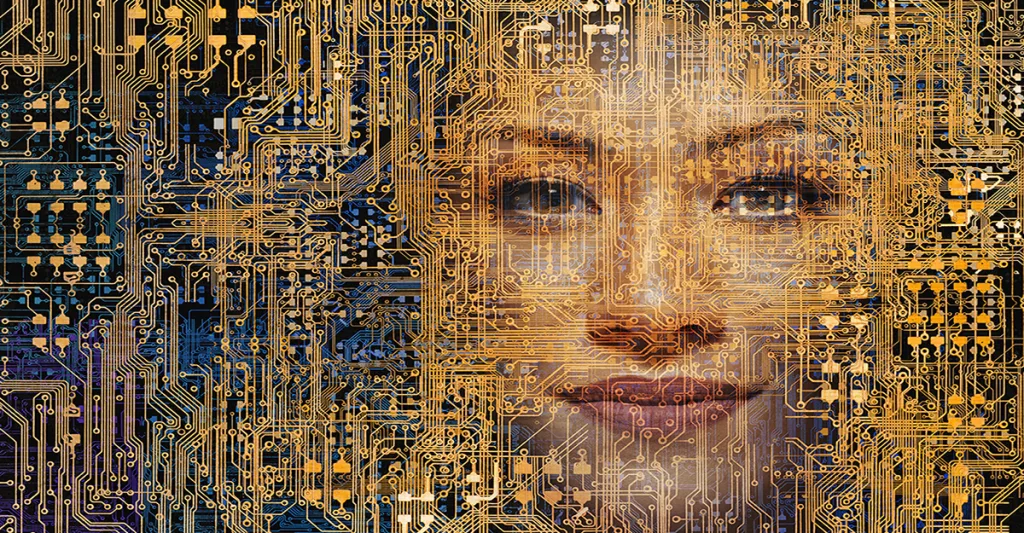Editor's note: Content sponsored by University of St. Augustine for Health Sciences.
Artificial intelligence (AI), or intelligence demonstrated by machines, is heavily influencing many industries.
AI applications in healthcare can literally change patients' lives, improving diagnostics and treatment and helping patients and healthcare providers make informed decisions quickly. AI in the global healthcare market (the total value of products and services sold) was valued at $2.4 billion in 2019 and is projected to reach $31.02 billion in 2025. Now in the COVID-19 pandemic, AI is being leveraged to identify virus-related misinformation on social media and remove it. AI is also helping scientists expedite vaccine development, track the virus and understand individual and population risk, among other applications.
Companies such as Microsoft, which recently stated it will dedicate $20 million to advance the use of artificial intelligence in COVID-19 research, recognize the need for and extraordinary potential of AI in healthcare.
AI in healthcare
The ultimate goal of AI in healthcare is to improve patient outcomes by revolutionizing treatment techniques. By analyzing complex medical data and drawing conclusions without direct human input, AI technology can help researchers make new discoveries. Various subtypes of AI are used in healthcare. Natural language processing algorithms give machines the ability to understand and interpret human language. Machine learning algorithms teach computers to find patterns and make predictions based on massive amounts of complex data. AI is already playing a huge role in healthcare, and its potential future applications are game-changing. We've outlined four distinct ways that AI is transforming the healthcare industry.
Four ways AI is transforming healthcare
This transformative technology has the ability to improve diagnostics, advance treatment options, boost patient adherence and engagement, and support administrative and operational efficiency.
1. Improving diagnostics
AI can help healthcare professionals diagnose patients by analyzing symptoms, suggesting personalized treatments and predicting risk. It can also detect abnormal results. Analyzing symptoms, suggesting personalized treatments and predicting risk Many healthcare providers and organizations are already using intelligent symptom checkers. This machine learning technology asks patients a series of questions about their symptoms and, based on their answers, informs them of appropriate next steps for seeking care. Buoy Health offers a web-based, AI-powered health assistant that healthcare organizations are using to triage patients who have symptoms of COVID-19. It offers personalized information and recommendations based on the latest guidance from the Centers for Disease Control and Prevention. Additionally, AI can take precision medicine -- healthcare tailored to the individual -- to the next level by synthesizing information and drawing conclusions, allowing for more informed and personalized treatment. Deep learning models have the ability to analyze massive amounts of data, including information about a patient's genetic content, other molecular/cellular analysis and lifestyle factors -- and find relevant research that can help doctors select treatments. AI can also be used to develop algorithms that make individual and population health risk predictions in order to help improve outcomes. At the University of Pennsylvania, doctors used a machine learning algorithm that can monitor hundreds of key variables in real time to anticipate sepsis or septic shock in patients 12 hours before onset. Detecting disease Imaging tools can advance the diagnostic process for clinicians. The San Francisco-based company Enlitic develops deep learning medical tools to improve radiology diagnoses by analyzing medical data. These tools allow clinicians to better understand and define the aggressiveness of cancers. In some cases, these tools can replace the need for tissue samples with "virtual biopsies," which would aid clinicians in identifying the phenotypes and genetic properties of tumors. These imaging tools have also been shown to make more accurate conclusions than clinicians. A 2017 study published in JAMA found that of 32 deep learning algorithms, seven were able to diagnose lymph node metastases in women with breast cancer more accurately than a panel of 11 pathologists.
Smartphones and other portable devices may also become powerful diagnostic tools that could benefit the areas of dermatology and ophthalmology. The use of AI in dermatology focuses on analyzing and classifying images and the ability to differentiate between benign and malignant skin lesions.
Using smartphones to collect and share images could widen the capabilities of telehealth. In ophthalmology, the medical device company Remidio has been able to detect diabetic retinopathy using a smartphone-based fundus camera, a low-power microscope with an attached camera.
2. Advancing treatment
AI is becoming a valuable tool for treating patients. Brain-computer interfaces could help restore the ability to speak and move in patients who have lost these abilities. This technology could also improve the quality of life for patients with ALS, strokes, or spinal cord injuries. There is potential for machine learning algorithms to advance the use of immunotherapy, to which currently only 20% of patients respond. New technology may be able to determine new options for targeting therapies to an individual's unique genetic makeup. Companies like BioXcel Therapeutics are working to develop new therapies using AI and machine learning. Additionally, clinical decision support systems can help assist healthcare professionals make better decisions by analyzing past, current and new patient data. IBM offers clinical support tools to help healthcare providers make more informed and evidence-based decisions. Finally, AI has the potential to expedite drug development by reducing the time and cost for discovery. AI supports data-driven decision making, helping researchers understand what compounds should be further explored.
3. Boosting patient engagement and adherence
Wearables and personalized medical devices, such as smartwatches and activity trackers, can help patients and clinicians monitor health. They can also contribute to research on population health factors by collecting and analyzing data about individuals. These devices can also be useful in helping patients adhere to treatment recommendations. Patient adherence to treatment plans can be a factor in determining outcome. When patients are noncompliant and fail to adjust their behaviors or take prescribed drugs as recommended, the care plan can fail.
The ability of AI to personalize treatment could help patients stay more involved and engaged in their care. AI tools can be used to send patients alerts or content intended to provoke action. Companies like Livongo are working to give users personalized "health nudges" through notifications that promote decisions supporting both mental and physical health.
AI can be used to create a patient self-service model -- an online portal accessible by portable devices -- that is more convenient and offers more choice. A self-service model helps providers reduce costs and helps consumers access the care they need in an efficient way.
4. Supporting administrative and operational workflow
AI can improve administrative and operational workflow in the healthcare system by automating some of the process. Recording notes and reviewing medical records in electronic health records takes up 34% to 55% of physicians' time, making it one of the leading causes of lost productivity for physicians. Clinical documentation tools that use natural language processing can help reduce the time providers spend on documentation time for clinicians and give them more time to focus on delivering top-quality care. Health insurance companies can also benefit from AI technology. The current process of evaluating claims is quite time-consuming, since 80% of healthcare claims are flagged by insurers as incorrect or fraudulent. Natural language processing tools can help insurers detect issues in seconds, rather than days or months.
Find more information
- Intel Newsroom, "U.S. Healthcare Leaders Expect Widespread Adoption of Artificial Intelligence by 2023," July 2, 2018
- Johns Hopkins Medicine, "Study Suggests Medical Errors Now Third Leading Cause of Death in the U.S." May 3, 2016
- Loria, Keith "Putting the AI in Radiology," Radiology Today, Vol. 19 No. 1
- Market Data Forecast, "Artificial Intelligence in Healthcare Market," April 2020
- Neiman et al., "CDC Grand Rounds: Improving Medication Adherence for Chronic Disease Management -- Innovations and Opportunities," CDC, Nov. 17, 2017
- Sogani et al., "Artificial intelligence in radiology: the ecosystem essential to improving patient care," Clinical Imaging, Jan. 2020







